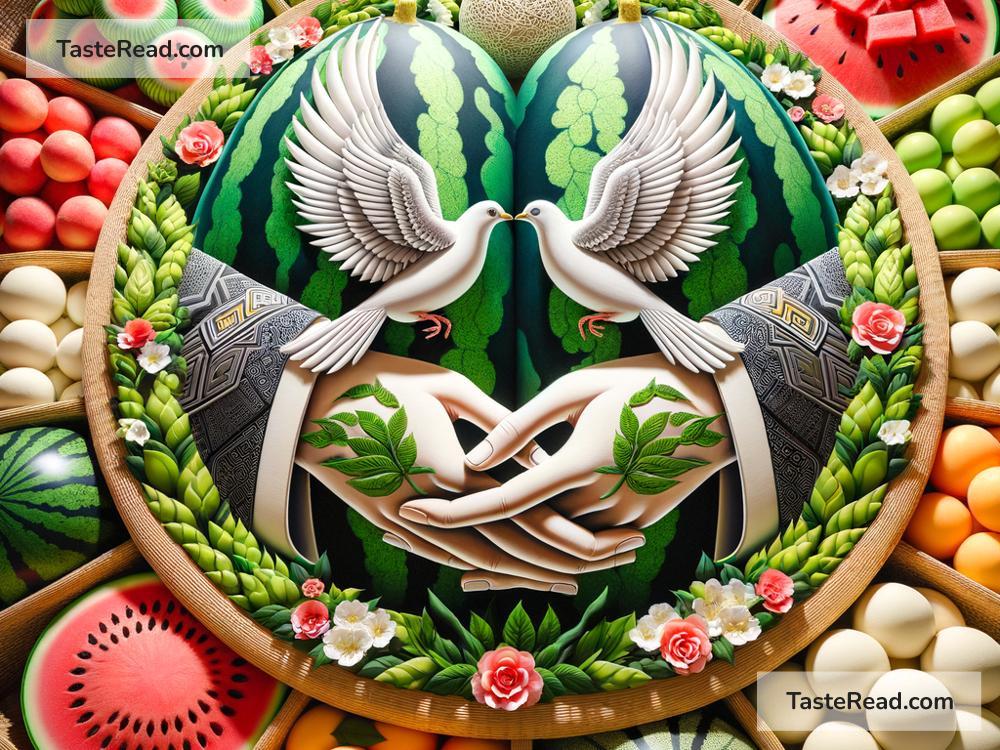How Melons Became Symbols of Harmony
Melons have always been a delightful treat for people around the world. From their sweet juice to their refreshing texture, these fruits are loved by many. But did you know that melons are more than just tasty snacks? In some cultures and traditions, melons have become symbols of harmony, balance, and unity. How did this happen? Let’s explore the story of melons and their unique connection to harmony.
The Beauty of Melons
First, let’s talk about why melons are so special. Think about a melon, such as a cantaloupe, honeydew, or watermelon. When you cut a melon open, you see symmetry and balance inside. The seeds are often organized in neat patterns, and the fruit flesh is spread evenly around them. Even on the outside, the natural grooves or stripes on certain melons give them a harmonious appearance.
This visual balance reflects a sense of order, and many people see this as a sign of harmony in nature. It reminds us of how nature creates beauty using simple patterns and shapes.
Melons in Ancient Times
The idea of melons symbolizing harmony isn’t new. In ancient times, people noticed the balanced structure of melons and began using them in art and culture. In countries like China, melons were often associated with family unity and togetherness. For example, during big family feasts, serving melons was a way of celebrating shared happiness and peaceful relationships.
In some Asian traditions, melons were seen as gifts of the earth, bringing sweetness and nourishment to everyone who ate them. Sharing a melon at a meal symbolized the idea that everyone can enjoy something together, without conflict.
Melons and Their Connection to Festivals
Melons also play a role in festivals and celebrations. Take the watermelon, for example, which is enjoyed by millions during summer gatherings. A slice of watermelon is not only cooling and delicious, but also easy to share. This makes it a simple way to bring people together.
In Japan, melons like musk melons are highly prized and often given as luxury gifts. The act of gifting a melon shows respect, kindness, and a desire for good relations. Some farmers even grow perfectly round melons to symbolize perfection and harmony.
Similarly, in the Middle East, melons are a common fruit served at social events. Offering a guest a slice of melon is considered a gesture of hospitality, emphasizing friendship and connection.
Harmony in Nature
Melons are also symbols of harmony because of how they are grown. Melon plants need the right balance of sunlight, water, and nutrients to thrive. Farmers often talk about the “golden middle” when growing melons—too much or too little of any one element can ruin the fruit. This careful balance in farming mirrors the harmony we seek in our own lives.
Nature teaches us through melons that balance is the key to success and happiness. Just as melons grow best under harmonious conditions, people thrive when there is balance in their relationships, work, and personal lives.
Melons in Literature and Art
Over the years, melons have appeared in literature, poetry, and art to represent harmony and unity. In Chinese poetry, melons have been used as metaphors for family bonds. One famous image is the idea of melon vines twisting together, symbolizing the interconnectedness of human relationships.
In Western culture, paintings of fruit bowls often include melons as a way to showcase abundance and peace. The soft colors and rounded shapes of melons remind viewers of calm and balance.
A Lesson for Us All
So, what can we learn from melons and their link to harmony? First, melons remind us to appreciate the beauty of balance in our lives. Whether it’s the balance of work and relaxation, or the balance of give and take in relationships, harmony is key to happiness.
Second, melons encourage us to share. Just as melons are easy to cut into pieces and share with others, we should strive to share our time, love, and kindness with those around us. Harmony often comes from acts of generosity and connection.
Finally, melons show us the importance of unity. Each slice of a melon is just one part of the whole fruit, just as each person is part of a larger community. By working together and supporting one another, we can create a world that is as sweet and harmonious as a perfectly ripe melon.
Conclusion
Melons may seem like simple fruits, but their connection to harmony is deep and meaningful. From their balanced appearance to their role in culture, festivals, and art, melons remind us of the importance of unity and balance. The next time you enjoy a slice of melon, take a moment to think about how this humble fruit reflects the beauty of harmony in our lives and in the world around us.


